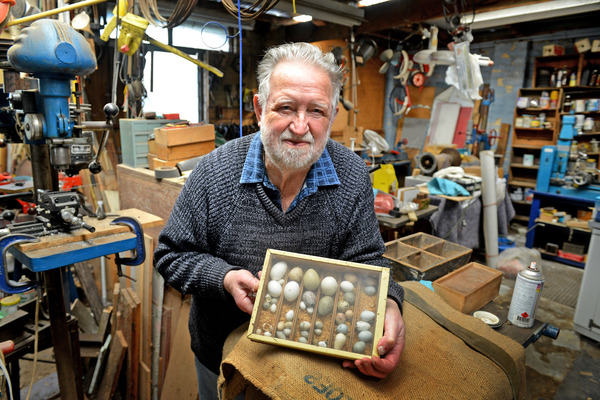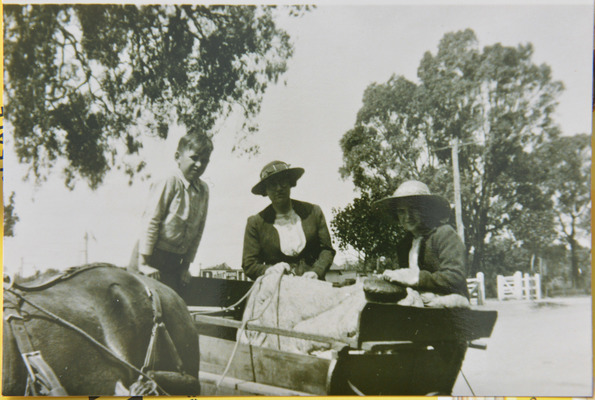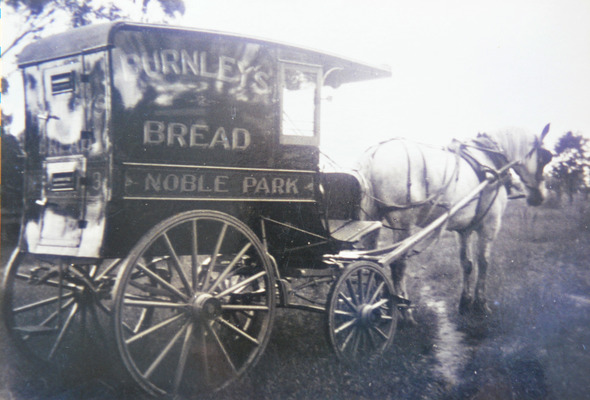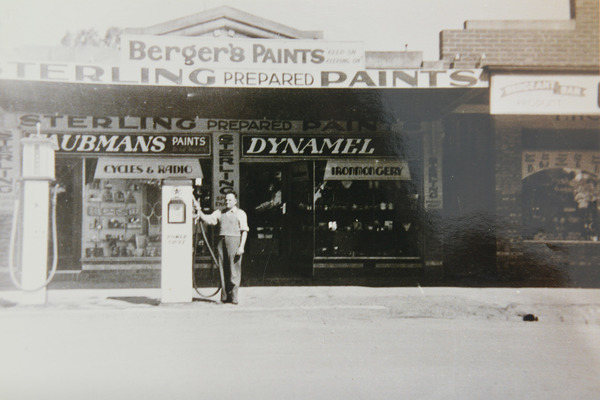

By Narelle Coulter
In the shed of his Noble Park home, amateur historian Geoff Wachter digs around in a cupboard searching for his collection of old egg shells.
“I know it’s in here somewhere. I saw it the other day,” he mutters.
Finally, 84-year-old Geoff finds what he is looking for. He gently lifts out a wooden box with a glass lid. Nestled inside are 40 or so little eggs. Some are speckled, others a watery shade of blue, some a tawney brown. All have neat little numbers written on them.
The remarkable thing about the collection is that Geoff gathered the shells more than 70 years ago when he was boy roaming the open country that surrounded the little village that was Noble Park, clambering up huge river red gums looking for nests.
“Parents would go mad these days if they saw the trees we used to climb,” Geoff said with a grin.
“There were a heck of a lot of birds in those days – sparrows, blackbirds, willy wagtails, gold finches.
“There were trees here then. Now the trees are gone and birds are gone.”
Few people know Noble Park as well as Geoff Wachter.
He was six when his family arrived in the suburb in 1938.
His parents Fred and Clarice bought their home in Stuart Street sight unseen. When the family arrived they discovered the house was uninhabitable because of the previous owner’s extensive menagerie.
Stoically, they erected a tent in the yard and the cleaning and fumigating commenced.
“It was much later that we discovered that this was the house that Joseph Bunn, the ‘Bush Baptist’ had built and lived in,” wrote Geoff in his book The Town of Noble Park and Some of its Early Residents.
His parents ran a green-grocer business in the James building in Douglas Street.
As a boy Geoff helped deliver the weekend orders in a horse and cart. When the roads flooded in winter deliveries always got through.
Noble Park was built on part of the Carrum Swamp and in winter Douglas Street and the surrounding area became a muddy, almost impassable bog.
Geoff said the wealthier early settlers chose higher ground and “the strugglers came to Noble Park”.
He believes a number of settlers came from the gold mining village of Walhalla, bringing their homes down from the mountains and relocating them in Noble Park. Even a church was moved from Walhalla via bullock dray when the gold ran out.
Many of the early settlers were also from Richmond and Collingwood who were forced out of their homes when the government embarked on a program of cleaning up the slums.
“That’s why it was struggle town,” he said.
According to the Victorian Places website, land in Noble Park started to be subdivided into market gardens in 1909.
One of the vendors was Allan Buckley. The suburb was named after one of his six children, Noble Buckley, and streets were named after his other children, including Douglas Street.
The Buckley family school was opened in 1911, an Anglican church in 1912 and a railway office/stopping place in 1913. A public hall was built in the same year.
The town had six shops in 1923, and the 1933 census recorded 1507 residents.
In his book Geoff writes that Frank O’Brien may have been the first trader in district. His store was located on the corner of Government Road (Corrigan Road) and Noble Street, diagonally opposite the site where the Simpson family later built the Cross Road Store.
O’Brien sold food and general provisions to passing travellers.
The centre of the town was dominated by two huge river red gums. The one that used to be right in the middle of the main street was a scar tree, known as a meeting place for local aboriginal tribes. It was cut down in the 1920s.
“That was the tree under which the town grew,” Geoff said.
In the 20th century the character of the town was changed again when European immigrants arrived. What was known locally as the Balt Camp was erected on the corner of Springvale and Heatherton Roads, where Burden Park is now, to house immigrants, mainly from the Baltic countries.
“It was a pleasant little town,” remembered Geoff.
“Everything was here. As a boy I had the freedom to hop on my bike and disappear. We’d come home again at sunset.”
He remembers riding the family horse to be shod by blacksmiths in Dandenong and Springvale.
“You’d hop on bareback, drop it off at the blacksmith and wander around town. Get back on and ride home.
“Very few families had cars.”
“In Stuart Street there were only three vehicles. Jim Kyle had a car, the Mitchells had a truck and my father had an old Dodge.
“Henry James had an Essex, which was, basically, the village ambulance. A lot of ladies were taken for their maternity visits in the Essex.”
The James family was influential in the development of early Noble Park. Bill ‘Pop’ James owned a large store in Douglas Street from which he ran a grocery business, an ironmongers and sold produce and insurance.
“They pretty well had the whole street.”
Geoff has an album of valuable old photographs of Noble Park, which create a portrait of the past which is unrecognisable today.
“I’m quite content here. It was a wonderful place to grow up.”









